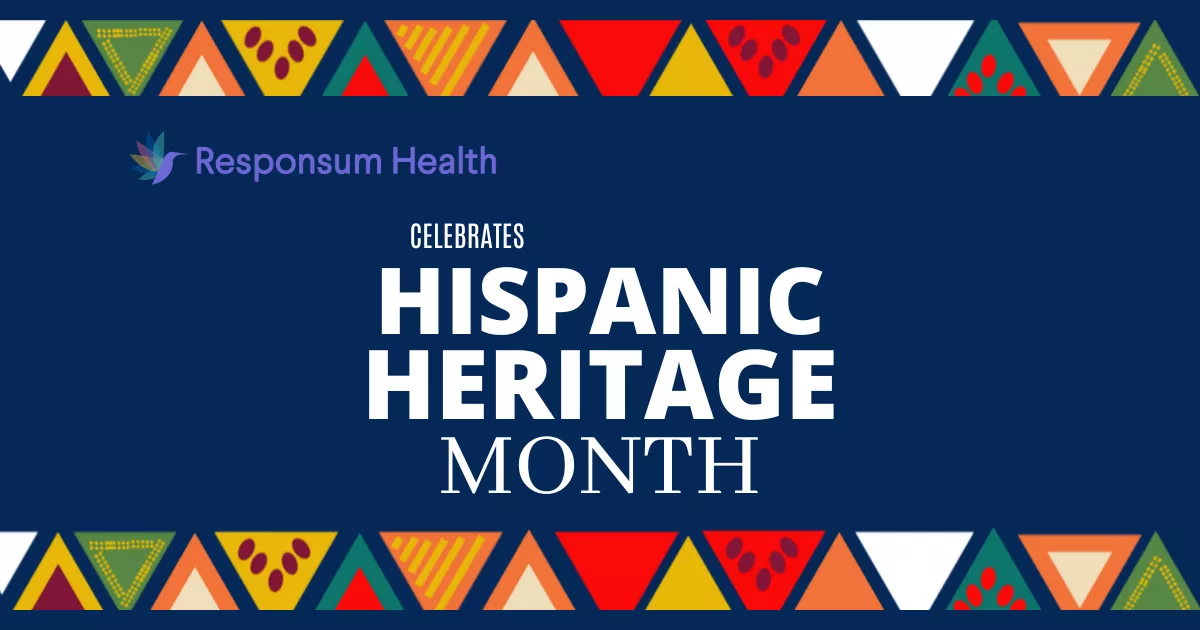
Hispanic Heritage Month: Celebrating Culture and Bridging Gaps in Healthcare Access and Clinical Research
The crisp air and boldly-colored leaves of September don’t just herald a change of seasons and the start of the school year (for those up north). It’s also a time to celebrate and honor ethnic and cultural diversity in the United States. Running from September 15th to October 15th, Hispanic Heritage Month is a time to recognize the rich cultural heritage and contributions of Hispanic and Latinx Americans. However, it’s also a critical opportunity to shed light on the pressing issues that affect Hispanic communities, particularly in the realms of healthcare access and clinical research.
A celebration of diversity
The core of Hispanic Heritage Month is recognition of the widely-varied tapestry woven by people of Hispanic and Latinx descent. This community encompasses individuals with roots in over 20 countries, each with its own unique traditions, languages, and customs.
From Mexico to Puerto Rico, the Dominican Republic to Argentina, Hispanic and Latinx communities add an enriching layer to this nation’s multicultural fabric through their:
- Cuisine (Spanish and Latin American)
- Languages
- Literature and poetry
- Music and dance
- Art
- Film (in both English and Spanish)
- Philosophy,
- Architecture
- activism,
- Scientific innovations
- Medical breakthroughs.
Healthcare access disparities in Hispanic communities
While Hispanic and Latinx communities have made significant contributions to the U.S., they continue to face systemic challenges here, with healthcare access disparities being one of the most pressing issues. Understanding these disparities is crucial to addressing them effectively.
- Language barriers. Language can be a formidable barrier to healthcare access for many Hispanic individuals who are not proficient in English. This can lead to misunderstandings, misdiagnoses, and inadequate treatment.
- Limited health insurance. A significant portion of the overall Hispanic population in the U.S. remains uninsured or underinsured. The lack of insurance coverage can deter people from seeking preventive care and early treatment, leading to more severe health issues down the line, despite having greater longevity than non-Hispanic Whites.
- Geographic disparities. Disparities in healthcare access are not uniform across the country. Rural Hispanic communities often face greater challenges in accessing healthcare services due to limited facilities and transportation options.
- Providers’ cultural incompetence. The healthcare system’s lack of cultural competence can make Hispanic patients feel uncomfortable, unheard, and frustrated, leading to decreased healthcare utilization, even when care is available.
The need for Hispanic inclusion in clinical research
Clinical research is the cornerstone of medical advancement, but it is only effective when it includes diverse populations representative of the broader society. Unfortunately, Hispanic individuals have been historically underrepresented in clinical trials, which has had–and continues to have–significant negative implications for healthcare outcomes. These include:
- Limited generalizability. Clinical research findings are often less applicable to Hispanic populations due to their underrepresentation. This can result in treatments and interventions that are not only less effective, but also inappropriate, for people in these communities.
- Missed opportunities. Failing to include Hispanic individuals in clinical research means missing out on valuable insights into the unique health challenges they face, limiting our understanding of diseases and potential treatments.
- Ethical considerations. The exclusion, or insufficient inclusion, of Hispanic individuals regarding clinical research raises ethical questions about the fairness and equity of medical advancements. All communities should have the opportunity to benefit from medical breakthroughs.
Strategies for improvement
To address healthcare access disparities and increase Hispanic inclusion in clinical research, experts suggest several strategies:
- Cultural competency training. Healthcare providers should receive training in cultural competency to better understand and serve Hispanic patients. This includes language proficiency, awareness of cultural norms, and sensitivity to cultural differences.
- Accessible Information. Providing healthcare information in multiple languages can help bridge the communication gap and ensure that Hispanic patients can make informed decisions about their health.
- Community outreach. Designing and establishing local health programs and clinics that specifically cater to Hispanic communities can improve healthcare access. These programs should prioritize preventive care and education.
- Expanded health insurance. Efforts to expand health insurance coverage, particularly for low-income Hispanic individuals and families, can significantly improve access to healthcare services. This includes improving access to higher-wage jobs and employer-based health benefits.
- Increased representation. Clinical research institutions need to do a better job of actively recruiting Hispanic participants for studies, and do so in culturally competent ways that address the community’s fears and other barriers. This will help ensure that research findings are applicable to a broader population base.
How to participate in Hispanic Heritage Month
Hispanic Heritage Month provides an opportunity to proactively educate ourselves concerning both Hispanic and Latinx triumphs and contributions to our culture and progress as a country, and also to the inequities and challenges that persist regarding the health and sucess of Hispanic and Latinx Americans. We can participate by immersing ourselves in the cultural riches that these diverse communities have shared with us. We can also raise and spread awareness of the work that must still be done, and take practical actions to help achieve health equity and improve quality of life for all individuals.

